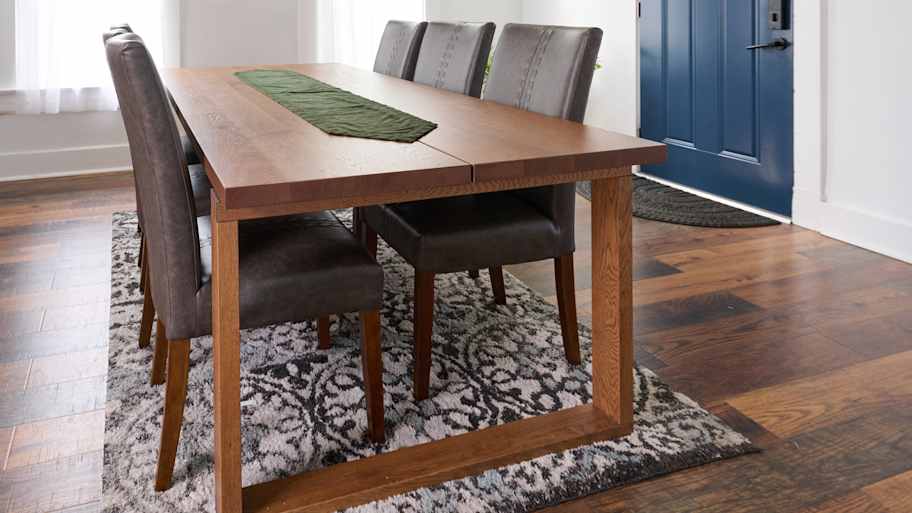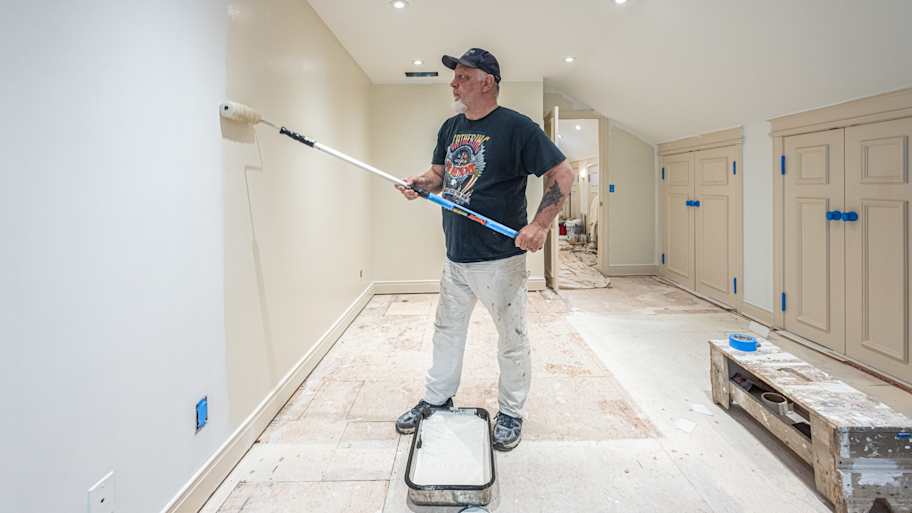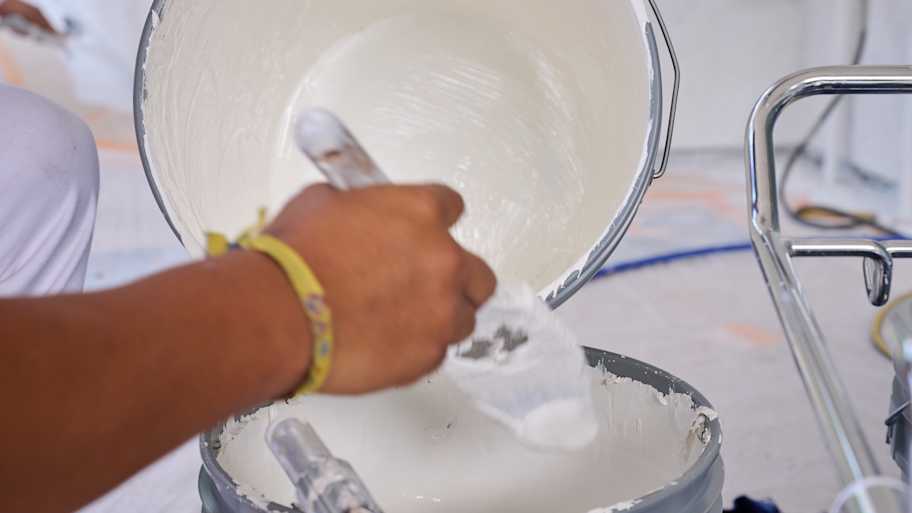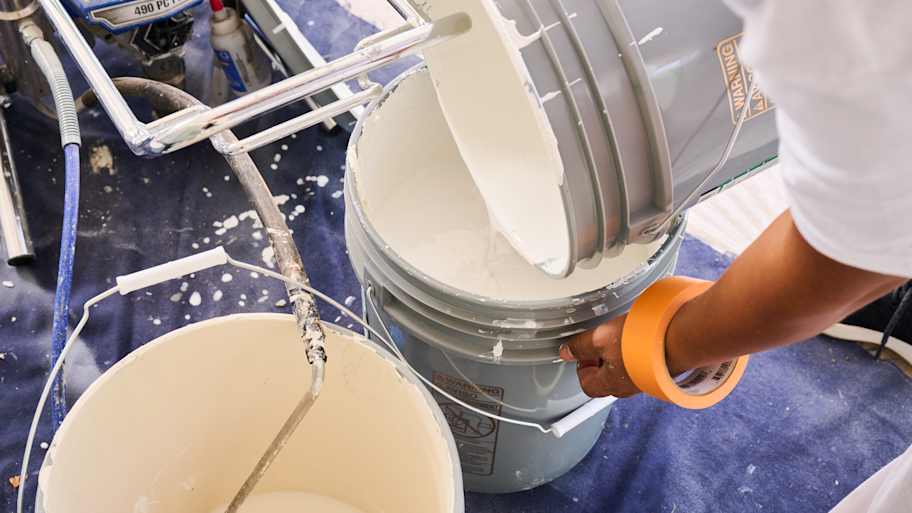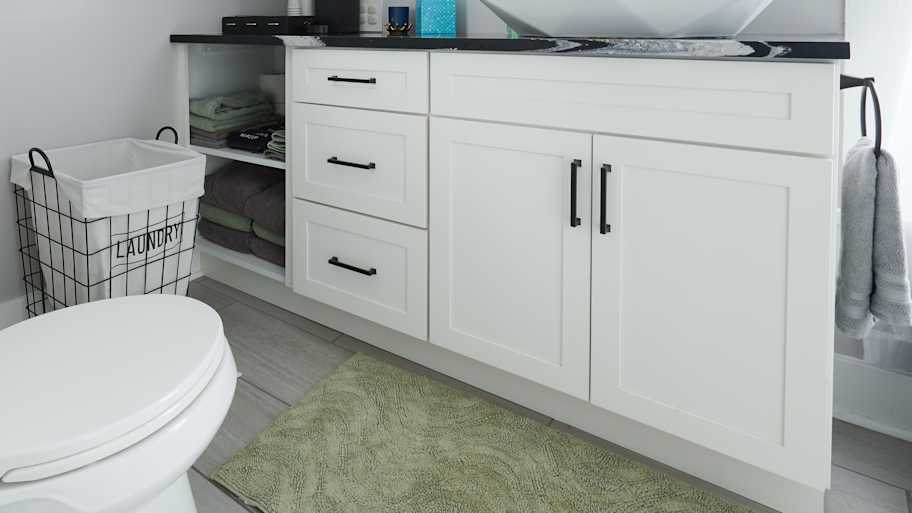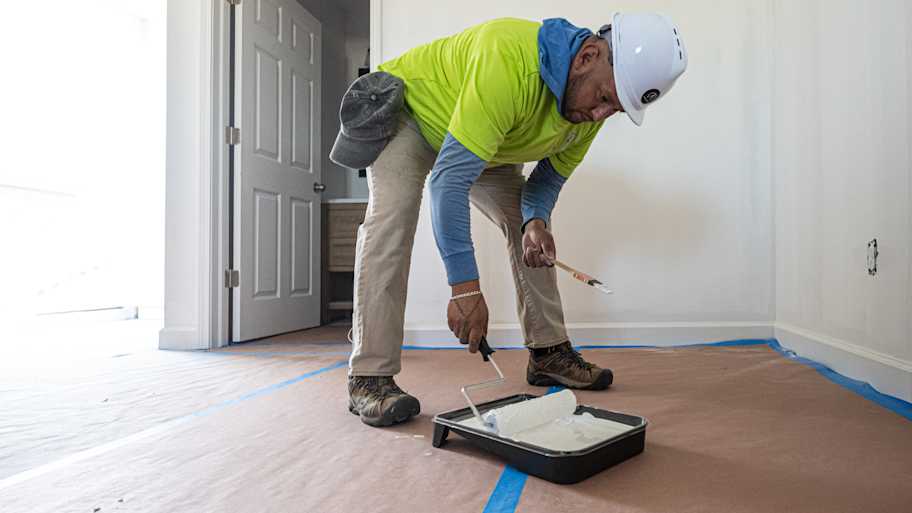How to Paint a White Wall in 8 Easy Steps
Create a clean, timeless look for any room in your home


- Paint brushes
- Paint roller
- Paint stirrer
- Paint tray
- Putty knife
- Paint
- Caulk
- Painter’s tape
- Primer
White walls are a fantastic way to brighten up a room and give it a crisp appearance. Painting a white wall is a simple DIY task that can make a major impact on how you relax and enjoy your home. The process of painting a room white comes with a few extra steps, especially when painting over dark colors, but the results are well worth it.
Preparation for Painting a White Wall
Painting a white wall over dark colors can take multiple coats to achieve the desired look. You should plan to buy one gallon of paint for every 400 square feet you want to paint. However, you may need more paint to complete the project, depending on how dark the interior paint color is. Keep this in mind as you purchase your supplies to ensure you have what you need and know that you may require more. Not only does this mean you will need more supplies, but this could increase how long it takes to complete the project as you wait for each coat to dry.
Prep the Room
 Photo: katleho Seisa / E+ / Getty Images
Photo: katleho Seisa / E+ / Getty ImagesBefore you start painting, you want to prepare the room to reduce damage to surfaces and furniture. Remove any lightweight furniture from the room. For larger items, place them in the center of the space and cover them with a drop cloth. To protect your floor from paint stains, place drop cloth on the floor as well.
You should remove electrical outlet covers and light switch covers. Be sure to shut off the circuit breaker before removing them and place all screws and covers together to avoid losing them. Cover the switch plates, door knobs, and any other hardware in the room with painter's tape. Cover light fixtures with a plastic sheet while the circuit breaker is still off.
Patch Holes or Imperfections
Due to the bright nature of white paint, imperfections will be easily exposed. For a pristine appearance on your walls, patch up any imperfections such as holes, scratches, or dings. Patch the areas with caulk, sand them down as needed, and apply a thin coat of primer over the patch job.
Apply Primer
Priming the walls is an optional step but can be beneficial when painting a white wall. Primer is a base coat that helps create a strong surface for the new paint to adhere to. When painting a white wall, it can take many coats to cover up the darker color beneath it. This step can be a huge time saver and prevent you from having to apply too many coats.
Apply your primer in even coats on your walls using a paint roller. The primer will have to dry completely before you can go in with your new paint color.
Paint the Corners and Around the Trim
Next, you will paint any areas of the wall that would be difficult to paint flawlessly with a roller. This painting technique, referred to as cutting in, involves using a brush to paint along the edge of areas such as trim, baseboards, ceiling lines, and crown molding.
To begin, dip the brush into the paint and remove any excess. Lightly paint in a straight, parallel line to the painter's tape. Feather the paint downwards when you reach the end of the area to create a seamless blend. Ensure the brush strokes blend by rolling the wall beside the area immediately.
Paint the Walls
Now you're ready to apply the white paint. You will work your way from top to bottom, using a roller extension pole for high areas as needed.
Begin by mixing your paint with a paint stirrer and pouring it into the tray. Be careful not to pour in too much to avoid overflowing. Gently dip your paint roller into the painting tray reservoir and pull the roller back. Your paint should evenly cover the roller, so roll it over the divots in the paint tray to remove excess paint.
Work in 3-foot sections at a time and apply the paint to the area in “M” or “W” motions to blend the roller lines. Once you finish applying the paint in one direction, go back over it in the opposing direction until the area is completely covered. If the area coincides with cutting in location, overlap the paint to create a smooth blend.
Repeat the process until the entirety of the room has been painted.
Repeat Painting the Walls As Needed
When painting a white wall, additional coats may be required. Wait until the first paint coat has dried completely before deciding on a second coat. If you decide it needs another coat, repeat the painting process, including cutting in and painting the walls.
Complete Touch Ups
After your final coat has dried, take a look at the walls. See if any areas require more paint or need to be caulked. Since white easily shows imperfections, you may discover areas that need work that weren't as glaring before. Fix those areas as needed.
Paint the Trim
Once your last coat of paint has been applied and dried, you may want to paint the trim with a fresh coat to maintain a clean appearance. Ensure the paint on the walls has dried completely as you will need to tap off the area to apply a coat to the trim.
DIY vs. Hiring a Pro
Painting a wall on your own is a simple task that can save you quite a bit of money in labor. If you were to hire a professional painter in your area, it could cost $200 to $1,000 to paint a single room. You could save hundreds of dollars by taking on the task yourself if you have the time and desire to learn. For a beginning DIYer, it can be a quick lesson that has a lasting impact.
Frequently Asked Questions
Painting walls white can make your space appear cleaner, brighter, and simpler. It creates a blank canvas for you to explore your home decor skills and doesn't limit your creativity. White walls are common in homes for this reason so it's always good to consider, especially if you plan to sell your home in the future.
White walls are considered a classic and timeless look and will most likely always be in style. A white wall easily blends into any type of home decor style which makes it a suitable option for most homeowners. Another appealing quality about white walls is that if it's not a color someone is going for, the color is easy to paint over.
To pair a unique sense of style with white walls, keep them well-decorated. Hang vibrant art or bold furniture to add color to the room. Add some texture and greenery to the space with plants. Choose accent pieces such as throw pillows or light fixtures with patterns. Having a white wall can be a plus as it allows homeowners to easily decorate their homes as they desire without worrying about clashing with the paint color.
